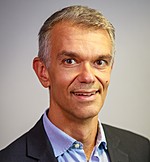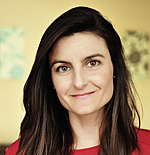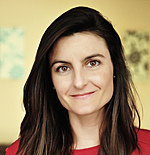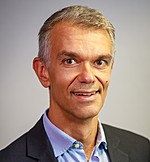BSP Masterclass - Minimally Invasive Non-Surgical Technique (MINST) - London
01.05.2024
01.05.2024
Course Presenters
The ECG Masterclass course will be presented by Professor Luigi Nibali & Miss Claire McCarthy.


Course overview
Non-surgical periodontal therapy (NSPT), together with oral hygiene instructions, is the mainstay of periodontal treatment. NSPT has evolved over the last few decades, moving towards a less invasive and more personalised approach. Utilising a novel better understanding of healing mechanisms and state-of the art instruments, minimally-invasive non-surgical periodontal therapy (MINST) has now been shown to lead to considerable clinical and radiographic improvements, even in very advanced cases of periodontal osseous defects. This session will provide a revision of current protocols for non-surgical periodontal therapy and will provide guidance on modern non-surgical instruments and techniques with hands-on training. We will describe in detail the concept of a minimally-invasive approach for periodontal regeneration of intrabony defects, by showing a treatment algorithm adopting the MINST approach. The hands-on aspects will cover non-surgical techniques, describing instruments and techniques for a minimally-invasive approach.
The course is suitable for the dental team, including both dentists with an interest in periodontology, dental hygienists and dental therapists.
Aim
Learning objectives
Learning outcomes
GDC Development Outcomes
C&D
6.5 hours of verifiable CPD is offered to all delegates who complete the course.
* Delegates are advised to bring their loupes with them to the course if they use them in clinical practice.
Venue Details:
Course fees:
Non-surgical periodontal therapy (NSPT), together with oral hygiene instructions, is the mainstay of periodontal treatment. NSPT has evolved over the last few decades, moving towards a less invasive and more personalised approach. Utilising a novel better understanding of healing mechanisms and state-of the art instruments, minimally-invasive non-surgical periodontal therapy (MINST) has now been shown to lead to considerable clinical and radiographic improvements, even in very advanced cases of periodontal osseous defects. This session will provide a revision of current protocols for non-surgical periodontal therapy and will provide guidance on modern non-surgical instruments and techniques with hands-on training. We will describe in detail the concept of a minimally-invasive approach for periodontal regeneration of intrabony defects, by showing a treatment algorithm adopting the MINST approach. The hands-on aspects will cover non-surgical techniques, describing instruments and techniques for a minimally-invasive approach.
The course is suitable for the dental team, including both dentists with an interest in periodontology, dental hygienists and dental therapists.
To introduce the theoretical concepts, instruments, clinical techniques and supporting evidence of minimally invasive non-surgical periodontal therapy (MINST)
Introduce the modern concepts of periodontal non-surgical therapy and MINST
Explain how the anatomy of periodontal intrabony defects can influence/facilitate regeneration.
Describe the algorithm (flowchart) for management of periodontal intrabony defects, to minimise morbidity and maximise healing potential.
Demonstrate the use of different instruments and techniques for non-surgical periodontal therapy and appreciate miniature hand instrument and ultrasonic tip designs.
Explain the rationale for atraumatic insertion techniques for minimally invasive non-surgical therapy.
Understand the modern concepts of periodontal non-surgical therapy and MINST
Appreciate how the anatomy of periodontal intrabony defects can influence/facilitate regeneration.
Adopt an algorithm (flowchart) for management of periodontal intrabony defects, to minimise morbidity and maximise healing potential.
Familiar with different instruments and techniques for non-surgical periodontal therapy and appreciate miniature hand instrument and ultrasonic tip designs
Demonstrate atraumatic insertion techniques for minimally invasive non-surgical therapy.

Claire graduated from Trinity College Dublin in 2000 and has worked in dental education for twenty years. She is a Clinical Teacher & Research Fellow in the Periodontal Department at Kings College London where she teaches all aspects of periodontal instrumentation, implant maintenance, oral hygiene and behaviour change techniques to dental undergraduates and post-graduate students in periodontology. She is Honorary Clinical Fellow at the Guys & St. Thomas’ NHS Foundation Trust and is completing her PhD on ultrasonic instrumentation. Claire is also visiting professor and adjunct instructor at New York University, College of Dentistry, where she teaches post-graduate residents in periodontology and implant dentistry. Claire completed her master’s degree in teaching and learning in higher education from the University of London in 2007 and spent eight years as course coordinator for BDS1 and BDS2 periodontology at Kings College London. Her specialist areas of interest are curriculum design, pre-clinical education, periodontal and implant instrumentation techniques, and interventions to increase patient and community engagement with homecare recommendations. Claire is a member of executive council at the British Society of Dental Hygiene & Therapy, is external examiner for the Irish Dental Council programme accreditation committee, has contributed to two textbooks and is a recipient of the ODRT research award for her project investigating treatment modalities for peri-implant mucositis.

Professor Luigi Nibali graduated from the University of Catania in Italy and was awarded a PhD in Periodontology at University College London in 2006. A registered UK specialist in periodontics since 2007, he previously worked as Clinical Lecturer and then Reader in Periodontology at the UCL Eastman Dental Institute and then at Queen Mary University of London. He is currently Professor/Honorary Consultant, Academic Lead and Director of the Postgraduate program in Periodontology at King’s College London (KCL), based at Guy’s Hospital. He is also co-Lead of the Oral Clinical Research Unit at KCL, where he manages a team involved in coordinating and running industry-led clinical trials as well as research funded by charities and research bodies. Prof Nibali has widely published in the medical and dental literature, including 2 textbooks, and received several international research prizes in periodontology and is currently Associate Editor of the Journal of Clinical Periodontology. He has been the recipient of several research grants focused on his research interests, ranging from periodontal medicine, genetics and microbial aetiopathogenesis and minimally-invasive periodontal treatment of intrabony defects and furcations.